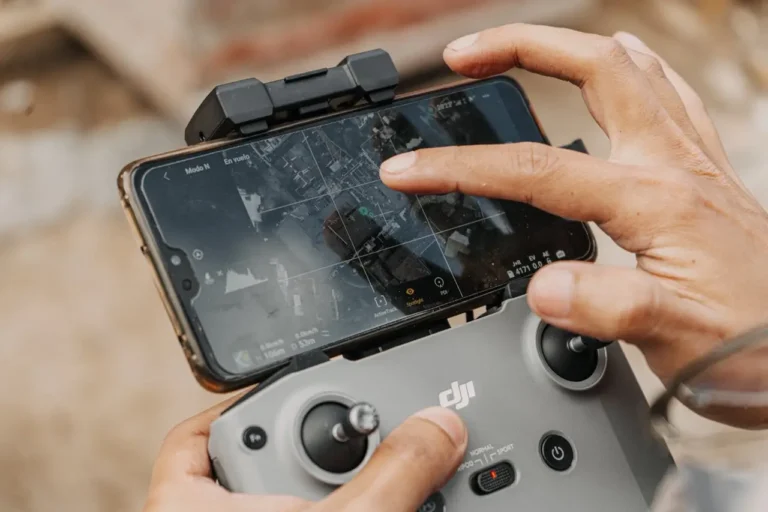Elevate Your Listings: The Best Drone for Real Estate Photography in 2025
Quick View
The best drones for real estate photography in 2025 are the DJI Air 3 for high-quality images and versatility, the DJI Mavic 3 Pro for professional, high-end video and image quality, and the DJI Mini 4 Pro as a budget-friendly and portable option with excellent performance. For long flight times, the Autel EVO Lite+ is a strong contender.
(Note: This guide has links to Amazon. If you purchase a product through these links, we may receive a small fee, but it won’t increase your cost. This helps us keep testing and writing honest reviews.)
In This Article
Welcome to the cutting edge of property marketing. In today’s visually driven real estate market, standard ground-level photos are no longer sufficient. Buyers expect to see the whole picture: the property’s scale, the layout of the land, the surrounding neighbourhood, and the home’s unique context. This is where finding the best drone for real estate photography becomes not just an advantage, but a necessity for top-tier agents and media professionals.
Gone are the days of grainy, unstable aerials. The latest drone technology offers stabilised 4K (and higher) video, brilliant high-resolution RAW photos, and intelligent flight systems that make capturing cinematic-quality shots safer and easier than ever. But the tech landscape is dense. With terms like ‘4/3 CMOS sensor,’ ‘O4 transmission,’ and ‘APAS 5.0’ floating around, how do you choose the right tool for the job?
As professional technologists and certified pilots, we’ve spent hundreds of hours flight-testing and analysing the top drones on the market. We’ve assessed them not just as flying cameras, but specifically as tools for real estate marketing. This guide is the result of that hands-on experience, designed to help you find the perfect aerial platform to elevate your listings and wow your clients.
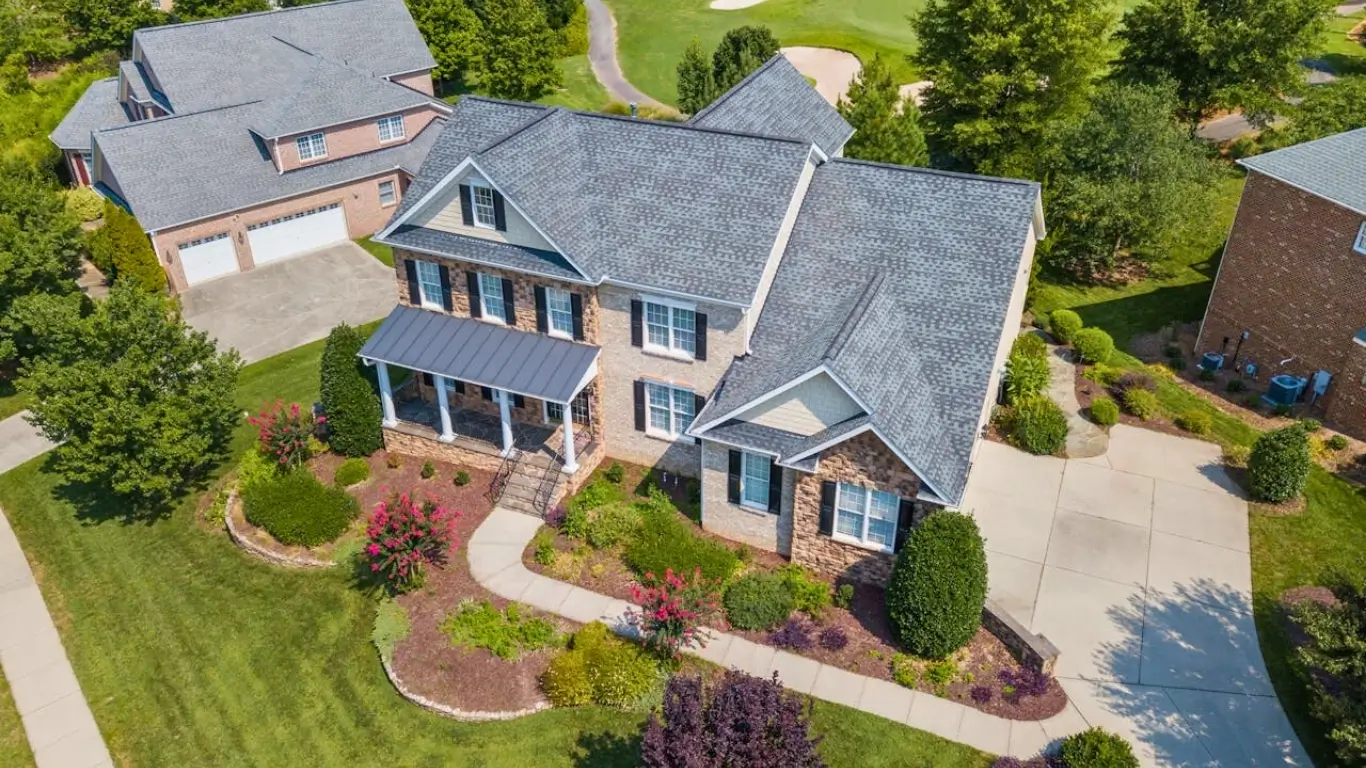
Our Top Picks
We know you’re busy. Here are our top-rated drones for real estate, based on extensive testing for image quality, flight performance, and overall value.
1. Best Overall: DJI Mavic 3 Pro
The undisputed king of prosumer aerial imaging. Its triple-camera system, featuring a massive 4/3 Hasselblad sensor, delivers unparalleled dynamic range and color fidelity. This is the drone for high-end, luxury listings where every pixel matters.
- Sensor: 4/3 CMOS (Main) + 1/1.3-inch (Medium Tele) + 1/2-inch (Tele)
- Photo: 20MP RAW
- Video: 5.1K/50fps, 4K/120fps, 10-bit D-Log
- Flight Time: 43 Minutes
2. Best All-Rounder: DJI Air 3
The DJI Air 3 hits the sweet spot. It offers a dual-camera system (wide and 3x telephoto), both with 1/1.3-inch sensors, providing imaging power that rivals older “Pro” models. It’s the perfect workhorse for the vast majority of real estate needs.
- Sensor: Dual 1/1.3-inch CMOS
- Photo: 48MP RAW (from both cameras)
- Video: 4K/100fps, 10-bit D-Log M
- Flight Time: 46 Minutes
3. Best Compact Option: DJI Mini 4 Pro
For agents who need maximum portability without sacrificing quality, the Mini 4 Pro is an engineering marvel. At under 250g, it sidesteps some registration hassles while still packing a pro-grade 1/1.3-inch sensor and true vertical shooting.
- Sensor: 1/1.3-inch CMOS
- Photo: 48MP RAW
- Video: 4K/100fps, 10-bit D-Log M, True Vertical
- Flight Time: 34 Minutes
Why Drones Transform Real Estate
A great real estate listing tells a story. A drone is your most powerful narrator. It can:
- Showcase Scale & Context: Instantly convey the size of a property and its relation to neighbors, parks, or water.
- Highlight Key Features: Provide compelling top-down views of pools, patios, landscaping, and roof condition.
- Capture the Neighborhood: A “reveal” shot rising above the trees to show the nearby amenities (schools, shopping, transport) is a powerful sales tool.
- Create Emotional Appeal: Cinematic orbits and fly-throughs (for the brave) create a “wow” factor that static photos can’t match.
How We Test and Why You Should Trust Us
Our recommendations aren’t based on reading spec sheets. Our team includes Part 107-certified pilots and digital media experts who have worked directly with real estate agencies.
Our testing protocol focuses on real-world scenarios:
- Image Quality: We shoot properties at different times of day (mid-day, golden hour) to test dynamic range. We specifically test RAW files (DNGs) for their post-processing flexibility in Lightroom.
- Gimbal Stability: We fly in moderate winds (10-15 mph) to test the 3-axis gimbal’s ability to produce perfectly smooth video.
- Video Codecs: We analyze 10-bit D-Log footage for color grading potential, a must for high-end video tours.
- Flight Systems: We test the reliability of obstacle avoidance systems (like APAS) near trees and structures. We also verify real-world flight time against marketing claims.
- Transmission: We test the signal strength (like DJI’s O4) in suburban environments with typical Wi-Fi interference.
This hands-on, expert-driven approach ensures our advice is authoritative, trustworthy, and directly applicable to your business.
In-Depth Reviews: Best Drones for Real Estate Photography
1. DJI Mavic 3 Pro
The Luxury Listing Specialist
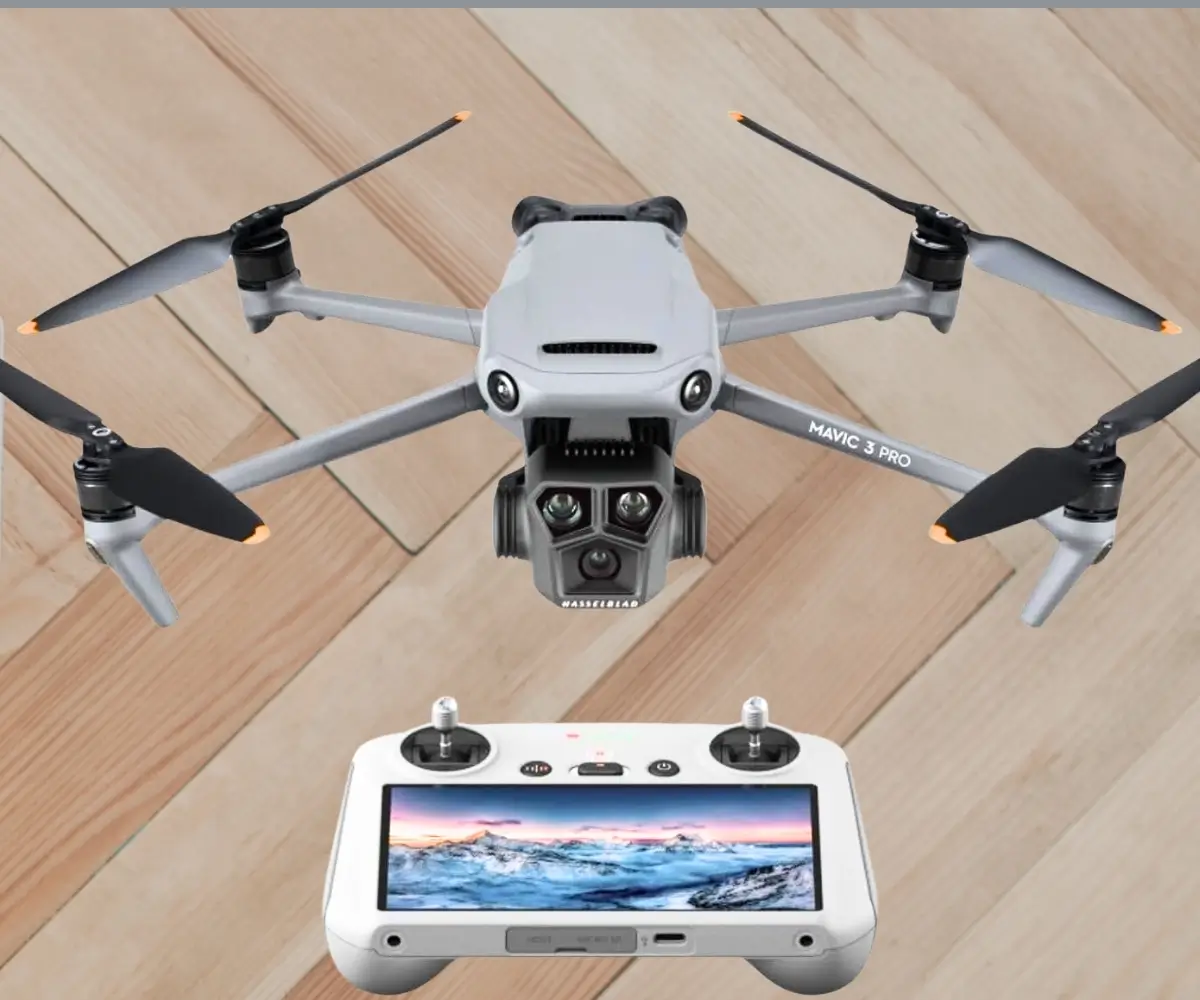
If your clients are in the luxury market, your visuals need to match. The Mavic 3 Pro is, without question, the pinnacle of portable aerial imaging. Its party piece is the triple-camera system, anchored by a massive 4/3 CMOS Hasselblad camera.
Image & Video Quality
The main camera’s 4/3 sensor is a game-changer. It captures a staggering 12.8 stops of dynamic range. In practice, this means you can shoot a home at sunset and retain detail in both the bright sky and the shadowy parts of the building. The Hasselblad Natural Colour Solution (HNCS) produces beautiful, true-to-life colors straight out of the camera. The addition of a 70mm (3x) medium tele-lens is fantastic for “compression” shots, making a property pop, and for getting closer without physically flying nearer. The 166mm (7x) tele-lens is less useful for photos but great for inspecting roof details. For video, 5.1K/50fps and 10-bit D-Log provide incredible detail and grading flexibility.
Flight Performance
With a 43-minute max flight time, you’ll rarely need a second battery for a single property. Its omnidirectional obstacle sensing is best-in-class, providing immense confidence when flying near expensive homes and landscaping.
Pros:
- Unmatched image quality from the 4/3 sensor
- Incredible dynamic range for tricky lighting
- Versatile triple-camera system
- Pro-level 10-bit video and Apple ProRes (on Cine model)
- Top-tier obstacle avoidance
Cons:
- Significantly more expensive
- Larger and heavier than other options
- The 7x tele-lens has a smaller sensor
Who is this for?
The high-end real estate photographer or agency that settles for nothing but the best. If you’re shooting multi-million dollar listings, this is your tool.
2. DJI Air 3
The Ultimate Workhorse
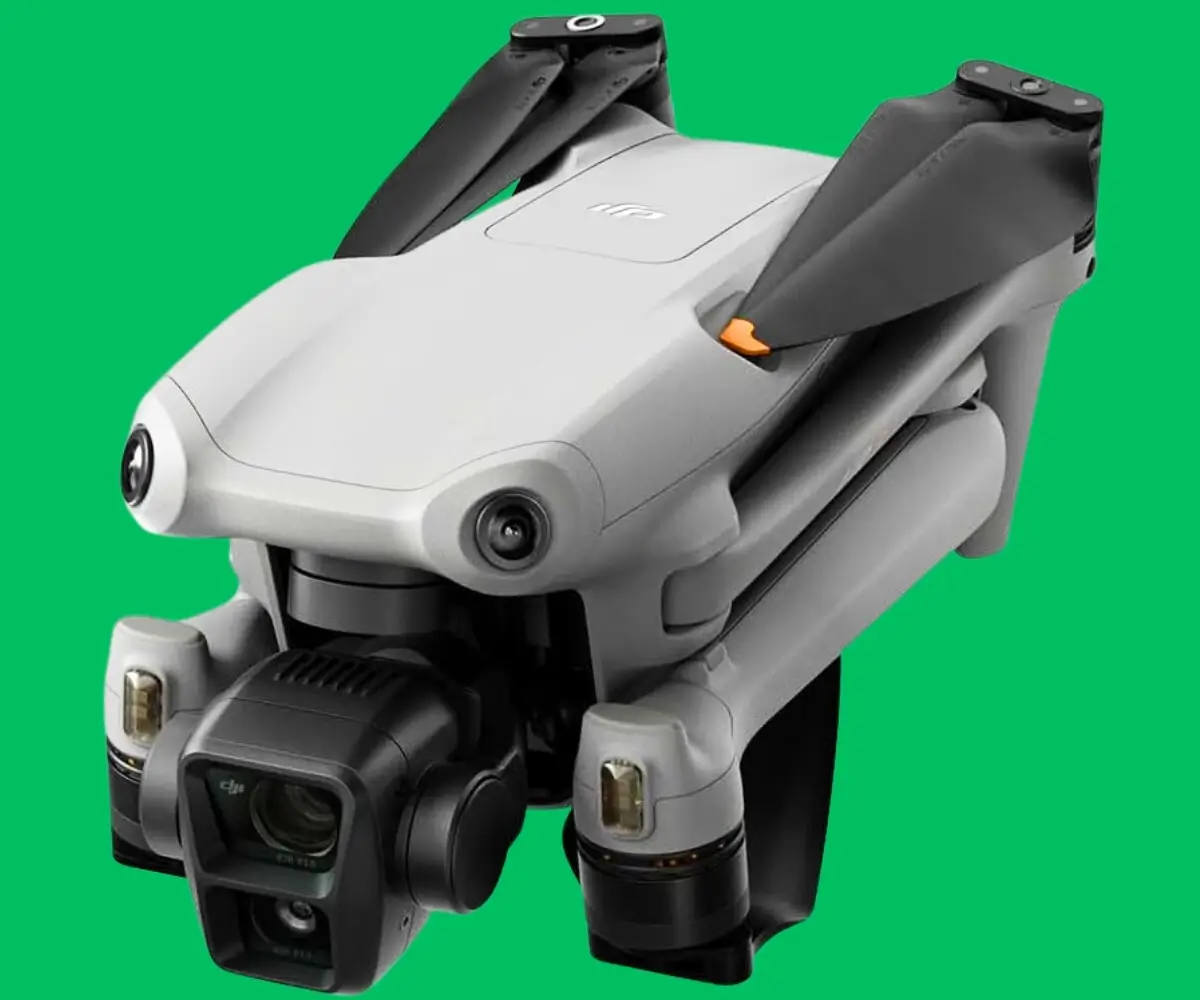
For 90% of real estate professionals, the DJI Air 3 is the smart choice. It perfectly balances price, portability, and performance. Its key upgrade is the dual-camera system. Unlike previous “Air” models, both the wide (24mm) and medium-tele (70mm) cameras use the same high-quality 1/1.3-inch CMOS sensor.
Image & Video Quality
This dual-sensor parity is a big deal. It means your 48MP RAW photos and 4K/60fps 10-bit D-Log M video are equally stunning from both focal lengths. You no longer sacrifice quality when you “punch in” for a tighter shot. The 70mm lens is ideal for creating separation between the home and its background, a classic real estate photography technique. The 1/1.3-inch sensors are a massive leap from the Air 2S, offering significantly better low-light performance and dynamic range.
Flight Performance
The Air 3 boasts an incredible 46-minute flight time, the best in its class. It also inherits flagship features like omnidirectional obstacle sensing and the new O4 transmission system, which provides a rock-solid 1080p/60fps video feed from miles away (far further than you’ll ever legally fly).
Pros:
- Excellent price-to-performance ratio
- High-quality sensors on both cameras
- Fantastic 46-minute battery life
- Flagship-level O4 transmission and obstacle sensing
- 4K/100fps slow-motion capabilities
Cons:
- Sensor is smaller than the Mavic 3 Pro
- Not as compact as the Mini series
Who is this for?
The full-time real estate photographer or busy agent who needs a reliable, high-performing “do-it-all” drone that can handle any property you throw at it.
3. DJI Mini 4 Pro
The Portable Powerhouse
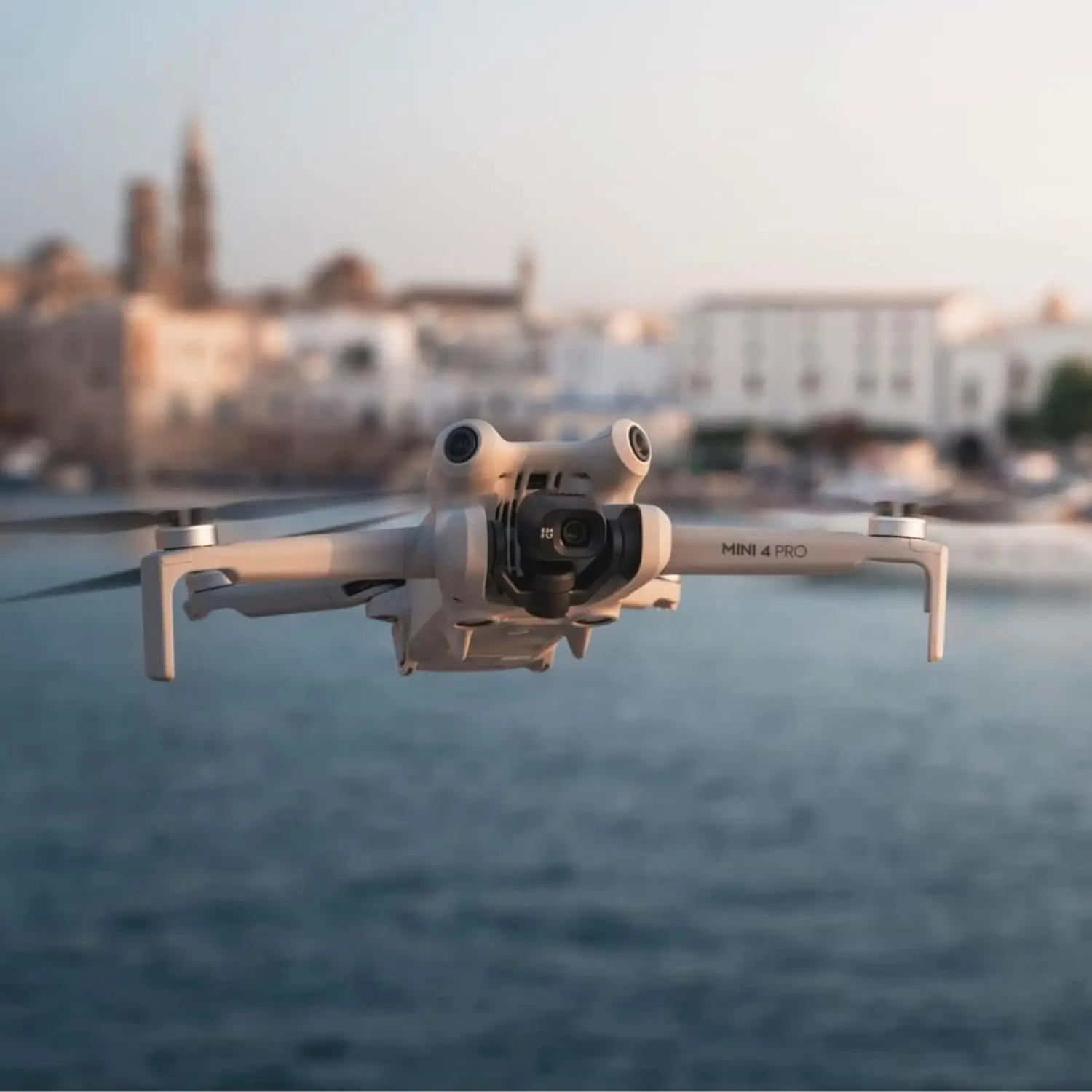
Don’t let the “Mini” name fool you. The Mini 4 Pro is a serious professional tool in a tiny, sub-250g package. This weight is a key feature, as it means you can bypass drone registration in some regions (though for commercial work in the US, you still need your Part 107 license).
Image & Video Quality
The Mini 4 Pro uses the same excellent 1/1.3-inch 48MP sensor as the Air 3’s cameras, but with an even brighter f/1.7 aperture. This thing is a low-light beast for its size, perfect for those “twilight” hero shots. It also shoots in 10-bit D-Log M, giving you pro-level color grading potential. Its most unique feature is the “True Vertical Shooting” gimbal, which physically rotates the camera 90 degrees. This is an absolute game-changer for creating content for social media like Instagram Reels and TikTok.
Flight Performance
This is the first Mini to feature omnidirectional obstacle sensing, a feature previously reserved for its larger siblings. This makes it infinitely safer to fly in tight, tree-filled yards. While its 34-minute flight time is lower than the Air 3’s, it’s more than enough for most properties.
Pros:
- Sub-250g weight avoids some registration
- True Vertical Shooting for social media content
- Excellent 1/1.3-inch sensor with f/1.7 aperture
- First Mini with omnidirectional obstacle avoidance
- Relatively affordable
Cons:
- Lighter weight makes it less stable in high winds
- Single focal length (no tele-lens)
- Shorter battery life than larger drones
Who is this for?
The solo agent, the social-media-savvy marketer, or the professional who needs a high-quality, ultra-portable backup drone. It’s the best drone for real estate photography if your primary concern is portability.
4. Autel EVO Lite+
The Best DJI Alternative
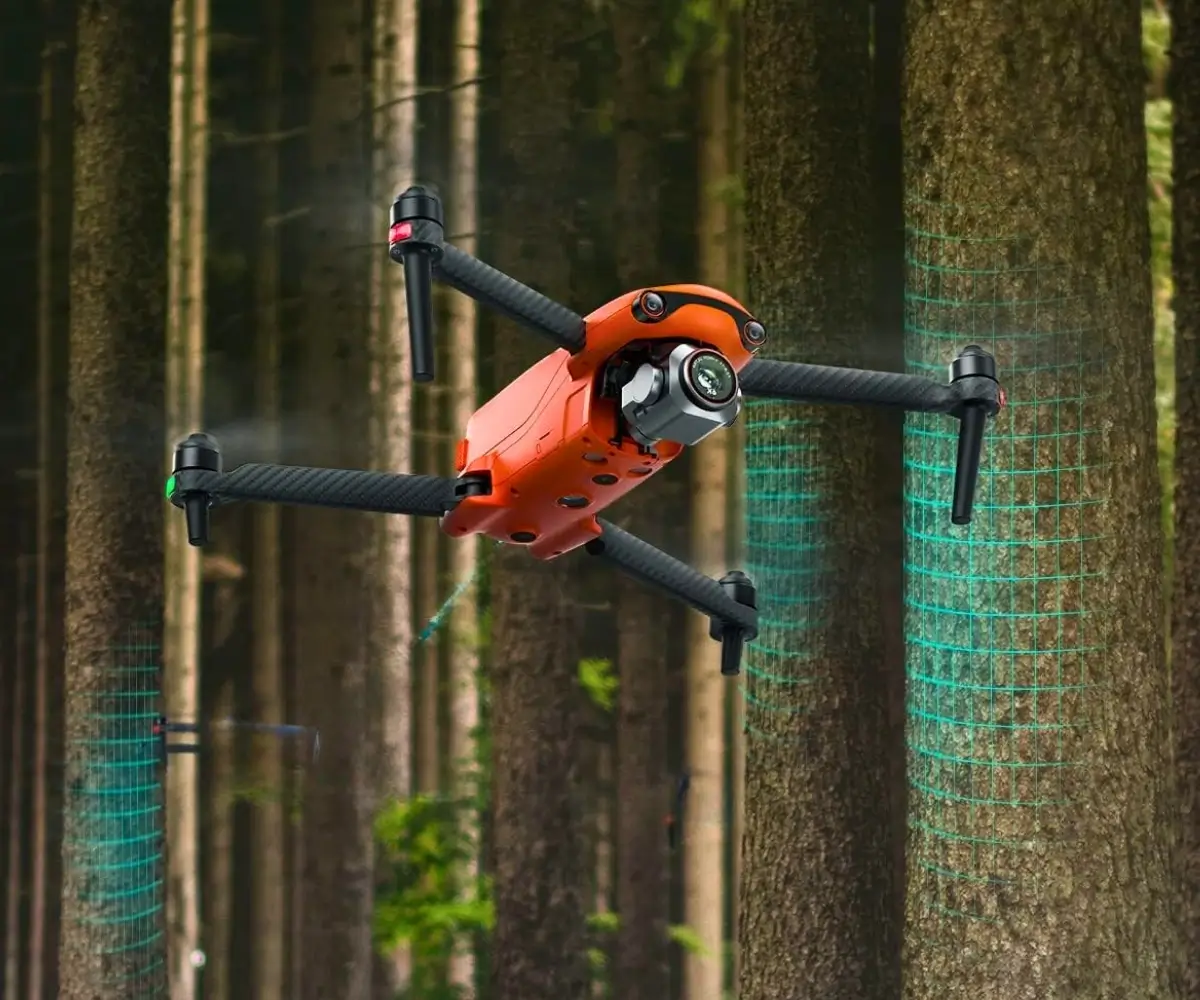
If you’re looking for a powerful option outside the DJI ecosystem, the Autel EVO Lite+ is a formidable competitor. Its standout feature is a 1-inch CMOS sensor paired with a variable aperture (f/2.8-f/11).
Image & Video Quality
The 1-inch sensor was the prosumer standard for years (popularized by the Air 2S) and still produces gorgeous 20MP RAW files. The variable aperture is a huge plus for videographers, allowing you to maintain a consistent shutter speed (for proper motion blur) in changing light conditions without needing to land and add ND filters. It can shoot 6K/30fps video, offering incredible detail.
Flight Performance
With a 40-minute flight time and 3-way obstacle avoidance (front, back, bottom), the EVO Lite+ is a capable and safe flyer. Its transmission system is robust, and many users praise the chunky, informative controller. Autel’s software is less polished than DJI’s but is free of geofencing “no-fly zones,” which is a plus for some professionals (though you are still 100% responsible for obeying all FAA regulations).
Pros:
- Excellent 1-inch sensor
- Variable aperture is a rare, pro-level feature
- No forced geofencing (use with caution)
- Solid 40-minute flight time
Cons:
- Only 3-way obstacle avoidance (no side sensors)
- The Autel app/ecosystem is less refined than DJI’s
- Larger and heavier than the Air 3
Who is this for?
The professional who wants an alternative to DJI, or the videographer who places high value on the in-flight control offered by a variable aperture.
What Makes the Best Drone for Real Estate Photography? (Buyer’s Guide)
When you’re comparing drones, specs can be overwhelming. Here’s what actually matters for this specific job.
Sensor Size is King
This is the single most important factor for image quality. A larger sensor captures more light, which translates to:
- Better Low-Light Performance: Less “noise” or grain in twilight shots.
- Higher Dynamic Range: The ability to capture details in both the bright sky and dark shadows of a home simultaneously.
- Sensor Tiers: 4/3 CMOS (Best) > 1-inch CMOS (Excellent) > 1/1.3-inch CMOS (Very Good).
RAW Photo Capability
Never shoot real estate in JPEG. JPEGs are compressed and “baked in.” RAW files (like DNG) capture all the original sensor data. This gives you massive flexibility in software like Adobe Lightroom to recover shadows, pull back highlights, correct white balance, and make a property look its absolute best. All drones on our list shoot RAW.
3-Axis Gimbal Stability
This is the motorized mount that holds the camera. A 3-axis gimbal is non-negotiable. It mechanically stabilizes the camera, compensating for wind and drone movements to create buttery-smooth video and tack-sharp photos, even in breezy conditions.
Real-World Battery Life
Marketing materials promise long flight times. In reality, you’ll land with 20-25% battery for safety. Look for a drone with a claimed time of 30+ minutes, which gives you a comfortable 20-25 minutes of real-world use per battery. This is more than enough for most properties.
Obstacle Avoidance Tech
When you’re flying a multi-thousand-dollar piece of equipment around someone’s expensive home and 100-year-old oak trees, you want a good safety net. Omnidirectional (all-direction) avoidance, found on the Mavic 3 Pro, Air 3, and Mini 4 Pro, is the new standard. It gives you peace of mind to focus on getting the shot.
Quick Tips for Better Drone Real Estate Shots
- Fly at Golden Hour: The 30-60 minutes after sunrise and before sunset provides soft, warm, directional light that makes properties glow. Avoid harsh mid-day sun.
- Use Auto-Exposure Bracketing (AEB): This mode takes 3-5 photos at different exposures (dark, normal, bright). You can merge these into a single HDR (High Dynamic Range) photo in post-processing, creating a perfectly exposed image.
- Vary Your Altitude & Angles: Don’t just hover 100 feet up. Get low “hero” shots (10-15 feet off the ground), classic 45-degree angles, and high-altitude (200-300 feet) “context” shots.
- Get Your Part 107 License: In the United States, if you are using a drone to make money in any way (including marketing your own listings), you are legally required to have an FAA Part 107 Remote Pilot Certificate. It’s a straightforward test and protects you and your business.
Frequently Asked Questions
Do I really need a license to fly a drone for my real estate listings?
Yes. In the US, any drone flight that furthers a business is considered commercial use. This requires the pilot to hold a Part 107 certificate from the FAA.
Is a 4K drone necessary for real estate?
Absolutely. 4K is the new standard for video. It looks sharper on all modern screens (TVs, computers, phones) and gives you the flexibility to crop in post-production without losing quality. All our recommended drones shoot 4K or higher.
Should I get the DJI Mini 4 Pro or the Air 3?
If portability and social media (vertical video) are your top priorities, get the Mini 4 Pro. If you want more flight stability in wind, longer battery life, and the versatility of a telephoto lens, get the Air 3.
Final Verdict
Choosing the best drone for real estate photography is a critical investment in your brand and marketing capability.
While the DJI Mavic 3 Pro is the undisputed imaging champion for luxury listings, our top recommendation for most real estate professionals is the DJI Air 3. It offers the perfect blend of pro-grade dual-camera image quality, exceptional battery life, and flagship safety features at a price that is easy to justify. For those who prioritise portability and social media content, the DJI Mini 4 Pro is a competent tool that punches far above its weight.
Whichever you choose, mastering aerial photography will separate your listings from the competition and provide undeniable value to your clients.

Flying a drone with a good camera truly feels like you’re soaring through the air, taking in the breathtaking landscape below, and enjoying the scenic views. This experience is what fuels my passion for flying drones. With over 20 years of experience as a certified electronics technician, I possess the skills to thoroughly test drones, both electronically and mechanically, and provide valuable insights. I genuinely hope my knowledge can assist you in making any decisions related to drones.



